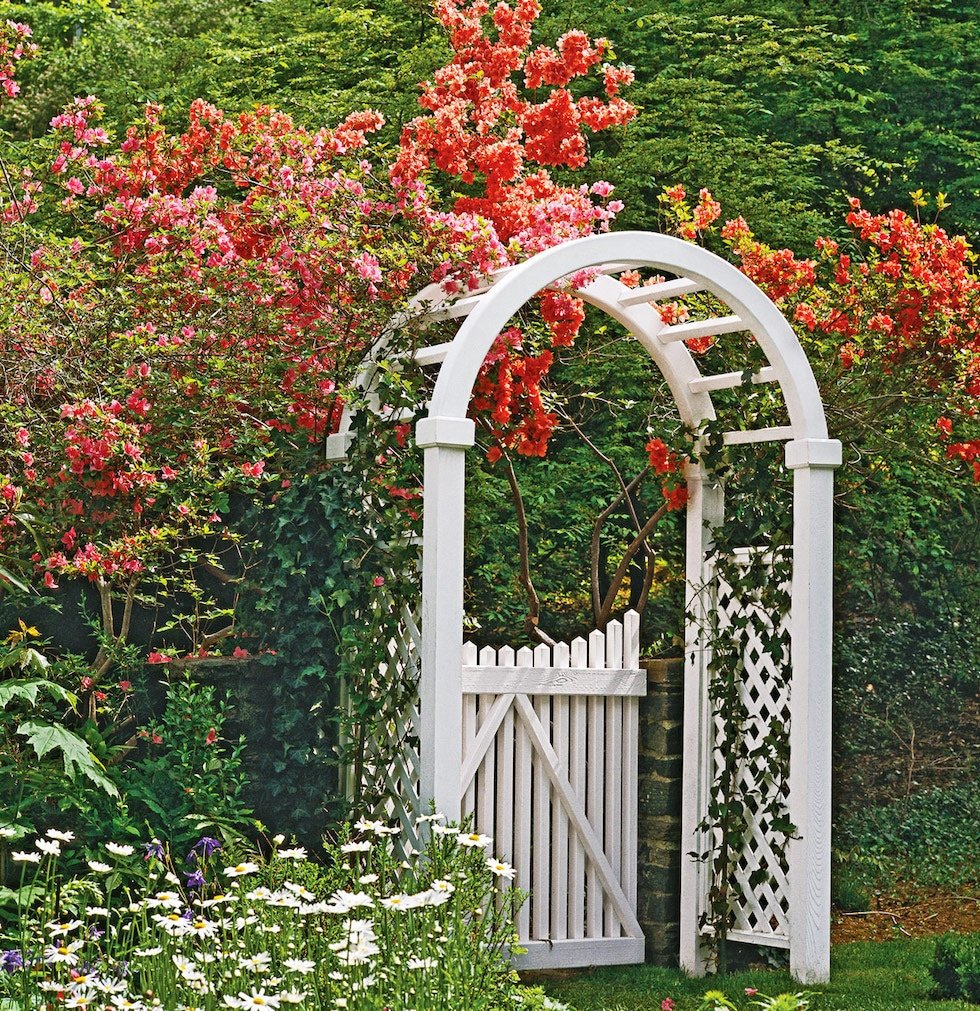Introduction
The arbor, a classic architectural feature, has been captivating hearts and minds for centuries. It is more than just a structure; it is a symbol of tranquility, natural beauty, and human ingenuity. This article delves into the world of Arbors, exploring their history, design elements, construction techniques, and popular uses. We will also discuss the cultural significance of Arbors and provide insights into the modern-day revival of this timeless architectural gem.
History of Arbors
The origins of Arbors can be traced back to ancient civilizations. In Mesopotamia, Arbors were constructed as shaded retreats for royal gardens. The ancient Greeks and Romans also embraced Arbors, incorporating them into their villas and public spaces. During the Middle Ages, Arbors were a common feature in monastic gardens, providing a serene environment for contemplation and prayer.
The Renaissance period witnessed a resurgence of interest in Arbors, with elaborate and ornate designs becoming popular. Italian gardens, in particular, were renowned for their beautiful Arbors, often adorned with intricate carvings and frescoes. The English garden movement in the 18th century further popularized Arbors, which were incorporated into landscaped parks and estates.
Design Elements of Arbors
Arbors come in a wide variety of designs, each with its own unique charm. Some of the key design elements to consider when planning an arbor include:
Shape: Arbor can be round, square, rectangular, or hexagonal. The choice of shape often depends on the surrounding landscape and the desired aesthetic.
Materials: Arbor can be constructed from a variety of materials, including wood, metal, stone, and vines. The choice of material will affect the overall style and durability of the arbor.
Roof: Arbors can have a solid roof, a trellis roof, or no roof at all. A solid roof provides shelter from the elements, while a trellis roof allows sunlight and air to filter through.
Decorations: Arbor can be decorated with climbing plants, flowers, lanterns, or other ornamental elements. These decorations can add personality and charm to the structure.
Privacy: If you desire privacy, you can enclose your arbor with lattice panels or solid walls.
Construction Techniques
Building an arbor is a rewarding DIY project. While the specific techniques will vary depending on the design and materials chosen, here are some general guidelines to follow:
Planning: Choose a suitable location for your arbor, taking into account factors such as sunlight, privacy, and the overall landscape.
Foundation: Prepare a solid foundation for your arbor to ensure stability. This may involve digging a hole and pouring concrete.
Framing: Construct the frame of your arbor using the chosen materials. This may involve cutting and joining wooden beams or metal posts.
Roofing: Install the roofing material, whether it is a solid roof, trellis roof, or no roof at all.
Decorations: Add any desired decorations, such as climbing plants, flowers, or lanterns.
Popular Uses of Arbors
Arbor have a wide range of uses, both practical Nagato Uzumaki and aesthetic. Here are some popular ways to incorporate Arbors into your outdoor space:
Relaxation and Meditation: Arbor provide a peaceful and secluded retreat for relaxation and meditation.
Entertainment: Arbor can be used as a focal point for outdoor gatherings, providing a shaded and comfortable space for socializing.
Gardening: Arbor can be used to support climbing plants, creating a beautiful and functional vertical garden.
Privacy: Arbor can be used to create a private outdoor space, shielding you from prying eyes.
Aesthetics: Arbor add beauty and charm to any outdoor space, enhancing the overall appeal of your garden or yard.
Cultural Significance of Arbors
Arbor have played a significant role in various cultures throughout history. In many traditions, Arbors are associated with love, romance, and marriage. They are often depicted in literature, poetry, and art as symbols of paradise and eternal youth.
Arbor also have religious and spiritual significance in some cultures. In Hinduism, Arbors are associated with the god Vishnu, who is often depicted resting under a banyan tree. In Buddhism, Arbors are used as a symbol of enlightenment and spiritual awakening.
The Modern-Day Revival of Arbors
In recent years, there has been a resurgence of interest in Arbor. People are increasingly seeking ways to connect with A Comprehensive Guide to Tsukasa Tenma nature and create peaceful outdoor spaces. Arbors offer a beautiful and practical solution for achieving these goals.
Modern Arbor are often designed to complement contemporary architectural styles. They may incorporate sleek lines, minimalist aesthetics, or sustainable materials. Arbors can also be customized to suit individual preferences and tastes.
Frequently Asked Questions
What is an arbor?
An arbor is a shaded alcove or retreat in a garden, typically formed by a framework of wood or metal that is covered with climbing plants. It provides a peaceful and secluded space for relaxation, contemplation, or social gatherings.
What is the history of arbors?
Arbors have a long and rich history, dating back to ancient civilizations. They were popular in Mesopotamia, Greece, Rome, and the Middle Ages, and experienced a resurgence in popularity during the Renaissance and Victorian eras.
What are the different types of arbors?
Arbor can be classified based on their shape, materials, and design features. Some common types include:
Round arbors: These have a circular shape and are often covered with climbing roses or wisteria.
Rectangular arbors: These are more common in modern gardens and can be designed to fit specific spaces.
Trellis arbors: These have a lattice-like structure that allows sunlight and air to filter through.
Pergola arbors: These are similar to trellises but are typically larger and more robust.
Final Thoughts
Arbor are timeless architectural elements that have captured the imagination of people for centuries. They offer a combination of beauty, functionality, and cultural significance. Whether you are looking to create a peaceful retreat, enhance your outdoor living space, or simply add a touch of elegance to your garden, an arbor is an excellent choice.
By understanding the history, design elements, construction techniques, and cultural significance of Arbor, you can make informed decisions when planning your own arbor. Whether you choose a traditional or modern design, an arbor is sure to provide a lasting source of enjoyment and inspiration.
To read more, Click Here


